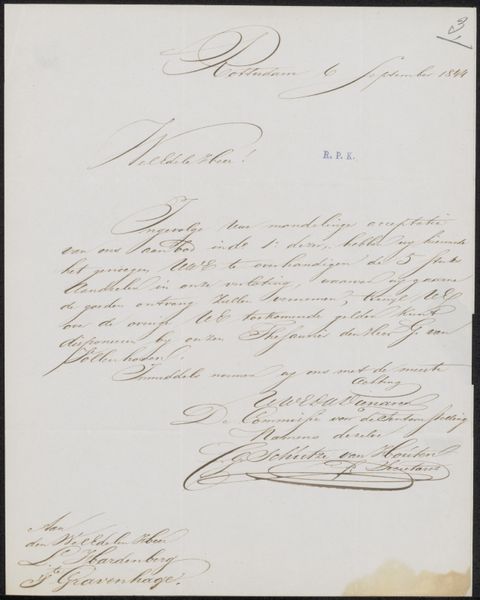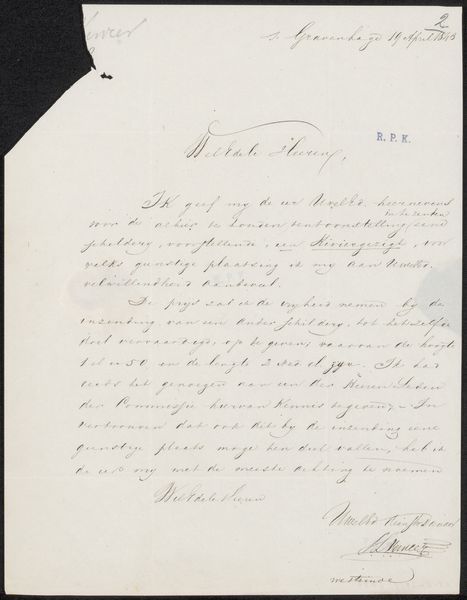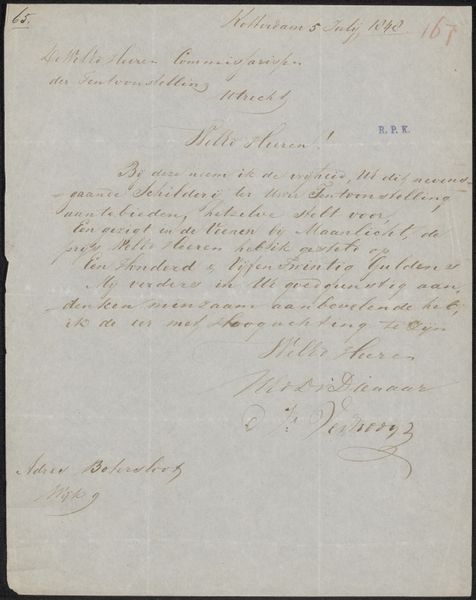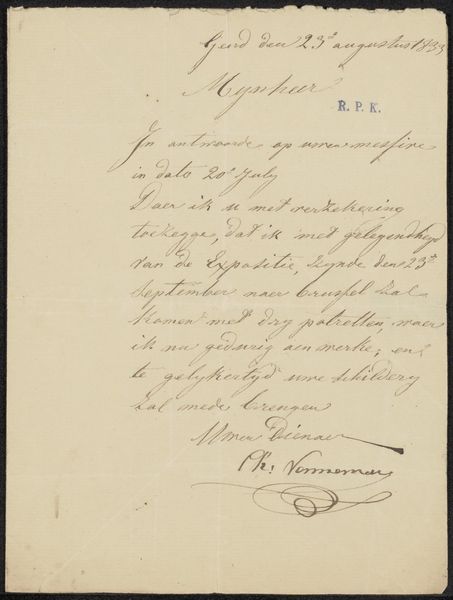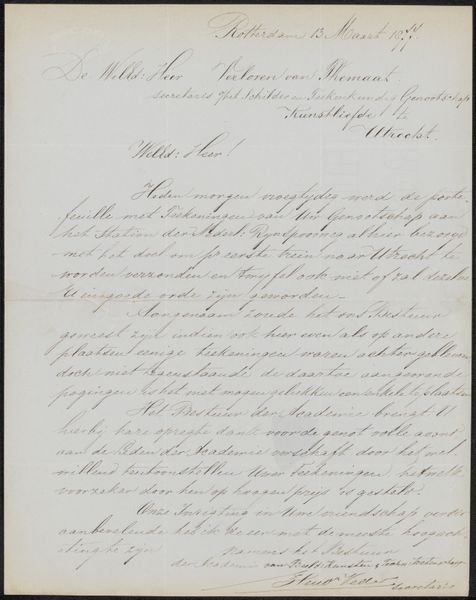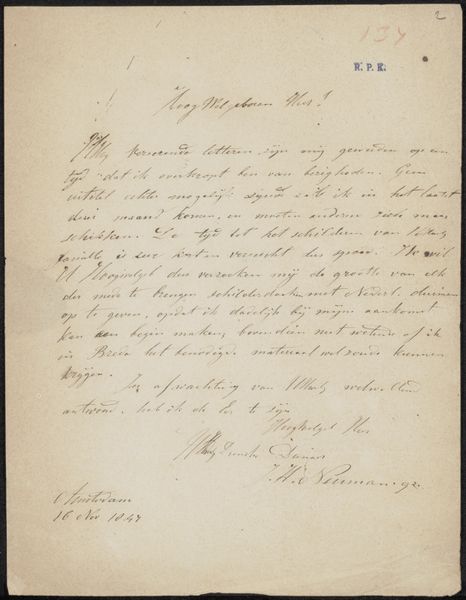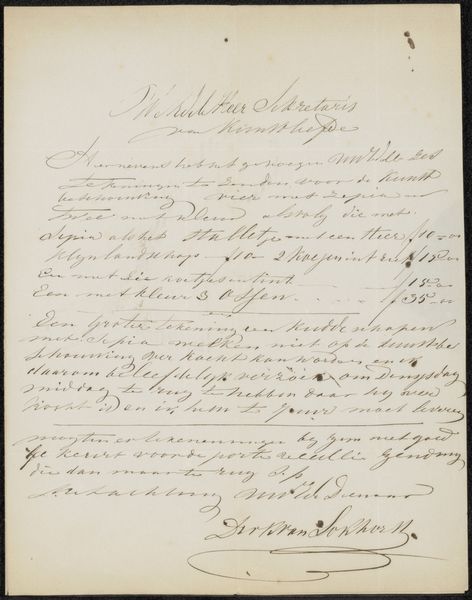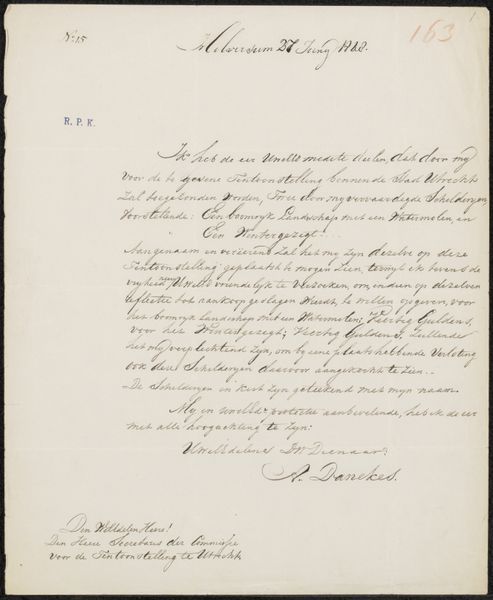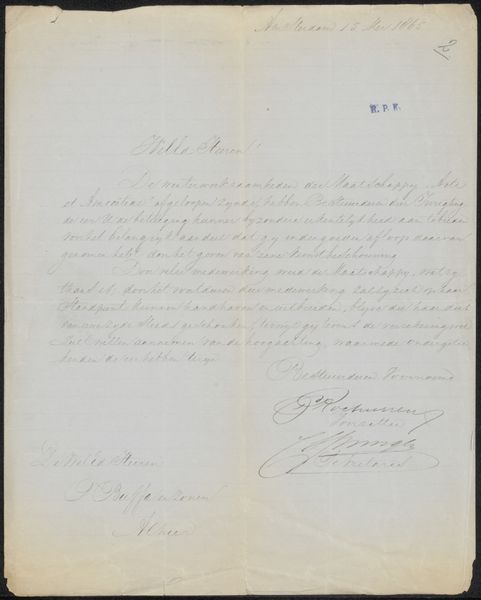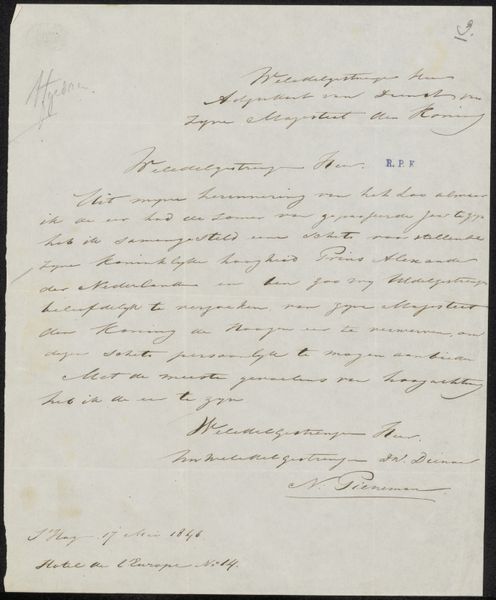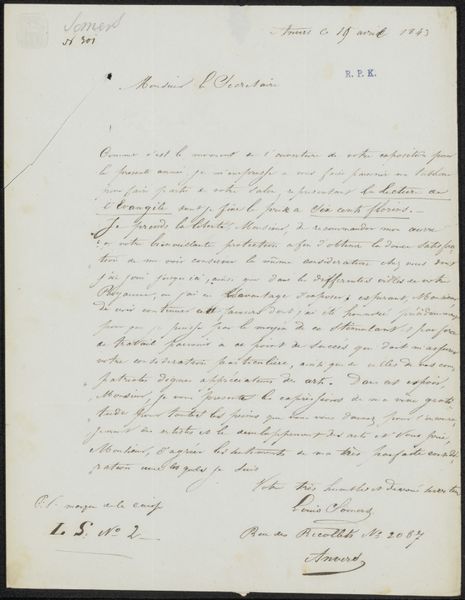
Brief aan de commissie van de Tentoonstelling van Levende Meesters in Utrecht 1848
0:00
0:00
drawing, paper, ink
#
drawing
#
ink painting
#
paper
#
ink
#
calligraphy
Copyright: Rijks Museum: Open Domain
Curator: This 1848 letter, "Brief aan de commissie van de Tentoonstelling van Levende Meesters in Utrecht" by Nicolaas Barnouw, utilizes ink on paper and can be categorized as drawing or calligraphy. What strikes you initially about this piece? Editor: Well, just seeing the handwritten script evokes a sense of history. It makes me wonder about the effort involved in creating and sending documents at this time, you know, the materiality of the whole thing. What do you see in it? Curator: I see a negotiation—the material circumstances of artmaking laid bare. Barnouw is writing to a commission to submit a painting, almost as a job application. Look closely at the cost he hopes to gain from the exhibition. Editor: Ah, I see! He mentions his price expectation. So the letter isn’t just a piece of writing; it’s directly tied to economic realities and the labor involved in creating art. Do you think the way this letter is written affected his prospects? Curator: Absolutely. The penmanship, the quality of the paper, the very act of sending it-- these all become part of the “product” he’s selling. It's not just about the unseen labor behind art but also a calculated step to present himself fitting to be accepted into the exposition. Think of how the artist used available technology and techniques to put themselves forward to people. It shows how economic systems affect cultural creations, even back then! Editor: So, analyzing the materials helps understand its significance in that historical and economic context? It goes beyond aesthetics. Curator: Precisely. The materiality allows us to understand the real-world constraints and considerations shaping art. We also glimpse 19th-century commerce and communication practices here. Editor: That’s a totally different way of looking at it than I’m used to. Thanks! Curator: Likewise. Focusing on the production reveals insights conventional analysis often misses.
Comments
No comments
Be the first to comment and join the conversation on the ultimate creative platform.

